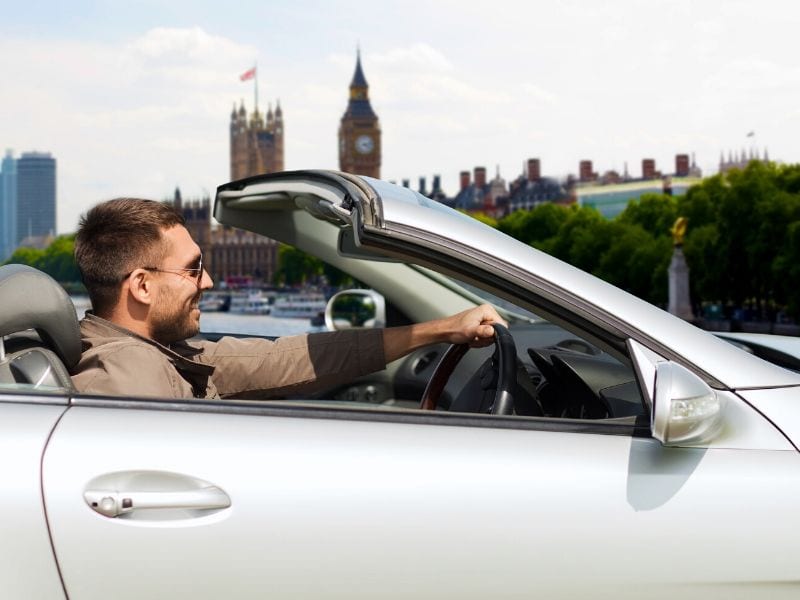Renting a car abroad can be a smooth process, depending on how much preparation is put in beforehand. Here are several tips for renting a car in a foreign country.
Whether your trip takes you to the narrow, winding roads of Marrakesh, the streets of London or the vast Great Ocean Road in Australia some good planning and forethought will save you time, money and stress.
Note: This is a guest post from the folks over at Great Ocean Road in Australia.
Tips for Renting a Car Abroad
Here are some tips on renting a car abroad and specifically, what can be researched and secured before you even step foot on your journey. And, like all good journey’s some planning goes a long ways.
Secure Your International Driver’s Permit
Depending on the country you are visiting, obtaining an international drivers license in advance is a critical step. An international driver’s license is recognized in 150 countries across the world and it pays (or rather saves) to have this with you to avoid facing fines on the road.
Some countries, like the United Kingdom, recognize your home country license, and thus you won’t need an international permit, but it’s best to research this beforehand, as the application process (in some cases) can take up to six weeks.

In the US, there are only two organizations which can issue an international permit; the American Automobile Association (AAA) and the American Automobile Touring Alliance. In Canada, business travelers should contact the Canadian Automobile Association to secure their permit.
Always keep both your driving license from your home country and the international permit with you, as law enforcement will likely want to see both in the event that you are stopped during your travels.
Find the Right Insurance
Having the right insurance coverage will not only cover accidents but also give you peace of mind should anything go wrong. There are two routes you can take when organising insurance:
Credit Card Insurance
Check into the benefits that come with your credit card; many offer some form of protection when driving abroad. You may have to add it on as an extra to your plan, or upgrade your credit card membership, but in some cases it can work out to be cost effective.
Rental Company
Insurance can be booked through the rental company, but it’s important to read through and understand what is covered. Depending on the country, it might be worth investing in a loss and damage waiver (LDW) to cover theft and crime as well.
In either case, always thoroughly read through the contract you take when renting the vehicle and make sure there aren’t any extra fees and penalties.
If you are on a business trip
If you are traveling for work, be sure to check your company’s policies regarding international car rentals. It’s possible that your company may provide coverage through other means, or conversely, may require you to take rental car insurance.
Research Your Destination
It’s useful to know the essentials before you arrive. By doing this, you avoid the stress and hassle of finding where to get fuel, paying for tolls or looking for the nearest parking space to your conference or meeting place.

Many rental companies will expect the vehicle to be returned with an agreed upon amount of fuel, and the last thing you need is to be frantically searching for a gas station before heading back to the airport.
We’ve all been in those situations, but by using technology to our advantage, many of these issues can easily be avoided by spending a few minutes researching the locations online. It may be worth taking a car charger for your mobile with you (although newer cars should have built in GPS systems).
Pro tip: Invest in an AC-mounted cell phone holder and make it easier to navigate while on your journey. See why here.
Choose a Suitable Vehicle
When selecting the vehicle for your trip, factor in the type of city or place that you’ll be driving around. If you’re going to have to navigate through the tiny streets of Italy, a massive 4×4 will probably be more hassle than having a small run around. If you’re traveling from the USA or Canada, it’s useful to remember that the streets in Europe tend to be narrow, and the cars much smaller in general.
In addition, take into account the conditions in which you’ll face, such as the weather, your passenger count and whether the car is manual or automatic transmission.
Be sure to see if you qualify for any discounts or perks from frequent flier memberships, AAA or even through your credit card.

Finally, make sure to book in advance. In the vast majority of cases, this can save a lot of money when compared to booking on arrival at the airport, and it gives you the chance to choose the right vehicle for you without feeling pressurized. Searching around for rental companies outside of the airport can be useful too, as they may be cheaper and have more vehicle options available.
Rules and Regulations of the Country
Keeping up to date with the rules of the country you are driving in abroad is essential. In most cases, playing the ignorance card when faced with a penalty won’t cut it, so in the interest of saving money, make a mental note of any regulations that are different to your own home country.
Some of these rules will be obvious, for example driving on the other side of the road, or observing how the roundabout flows. Others rules may not be, but most countries make their driving regulations easy to find online and are translated into English. Make sure to know the speed limits, road signs and laws around alcohol consumption when driving.
Although it is never advisable to drive when drinking, some countries allow for a glass of wine, whereas others can and will impose strict measures if you’re caught. Knowing your limits can avoid getting yourself into such a situation.
Finally, be aware that in some countries it isn’t possible to rent a vehicle under the age of 25 (and if it is possible, extra fees may be applied). If you follow these tips your business car rental abroad should go as smoothly as possible!
This was a guest from the folks at Great Ocean Road Collective, sharing the beauty of the most scenic road in Australia!
Be sure to check out our other travel related content, including our 9 Rental Car Hacks.
Affiliate Disclosure: As an Amazon Associate I earn from qualifying purchases. I may also earn commissions from other affiliate programs as applicable.


3 comments
Good tips. As an experienced car renter, I might add that some credit cards that offer “primary” coverage for rental cars require you to decline the CDW or LDW in order for it to be covered so read the small print. The Chase Sapphire cards are an example of this.
You also offer a good general tip of researching the local fuel and tolls. I find this one of the most stressful parts of the rental process in some countries. Simple things like your credit card may not work at the pump unless its chip and pin or the gasoline pumps are green for “gas” and some other color for “diesel” which is different than in other countries like the USA. Language can be a huge barrier at cash stations also. Some are closed at odd times or on odd days like in Israel or Italy. It really pays to research the fuel situations. Because of the stress in some rougher places, I will just go all in and pre-pay the fuel buy the CDW or LDW even though I have cards that would cover it simply to limit any stress to the experience.
Lastly, I would add that (regardless of country) you should ALWAYS take photos of any rental car or truck when you pick it up and when you drop it off. Using a timestamp camera app is even better for this. If you aren’t careful you’ll pay for side mirrors you didn’t break in Ireland, random scratches you didn’t do in Chicago or tire damage you didn’t cause in Turkey.
If you’re from North America (especially younger than 40), be aware that many cars in foreign countries (Latin America, Europe, etc.) will have come with standard transmission. If you can’t drive a stick, be sure to request an automatic transmission in advance. In my case, I happily drive a standard transmission (which is especially handy in Latin America with challenging driving conditions) but would need an automatic in any country where they drive on the left. Challenging enough to remember that the turn signal and wipers are on opposite sides, but shifting with your left while working the pedals is too much of a mind game for try.
Great point. I learned that the hard way once. Well not that hard, because I can drive a stick, but I was a bit rusty!